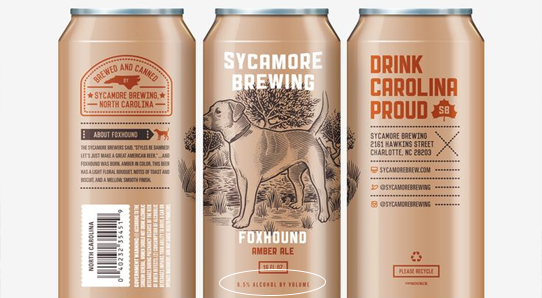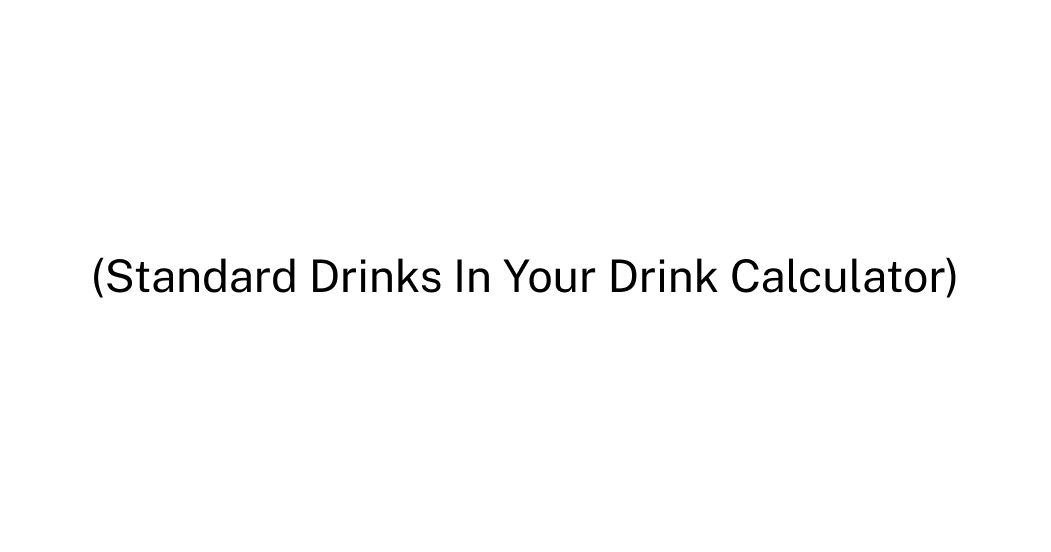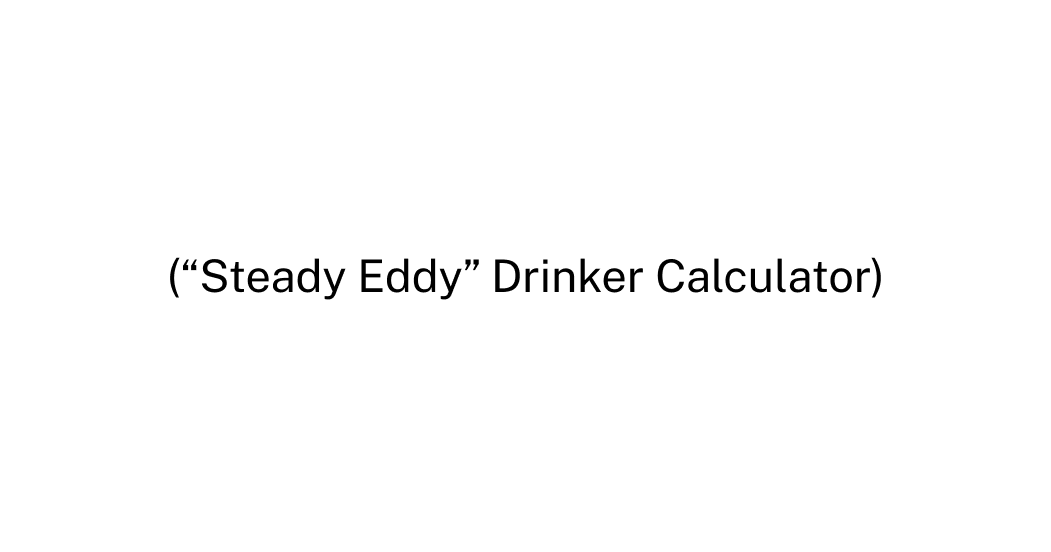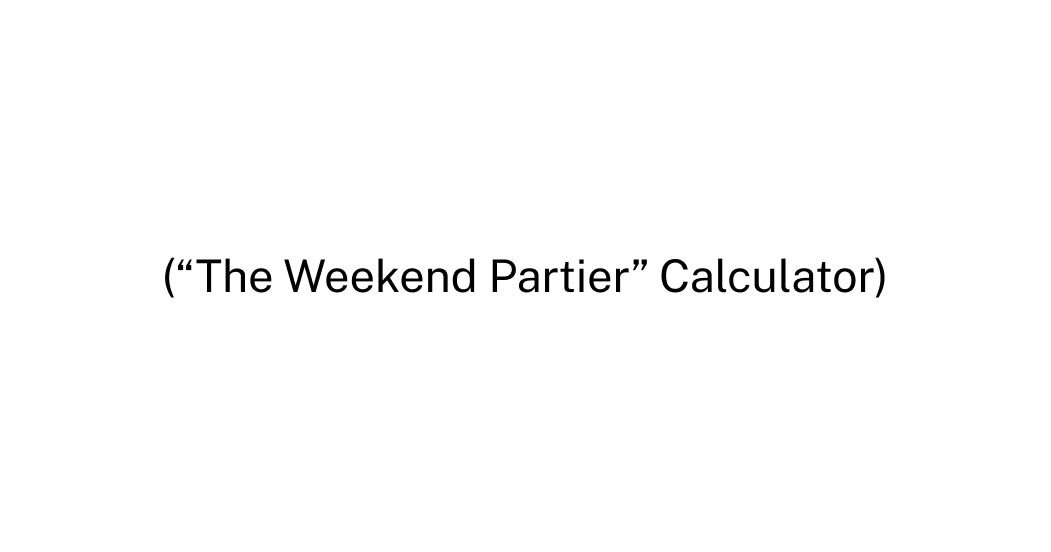If you’ve come here after searching on this issue, it’s likely that you’re wondering about your drinking and whether or not you should cut back to reduce alcohol-related problems or risks for problems.
If you’ve not yet read the first two blogs in this seven blog series on moderate drinking, we recommend doing so as the blogs all build on each other. The first blog provides an important introduction to the series and an outline of what each blog covers. The second blog defines moderate drinking based on solid empirical research over the years; it also addresses instances where attempting moderate drinking could be hazardous to your health and well-being and should therefore be avoided. If you haven’t yet read Blog 2, we recommend that you do so now. Blog 3 helps you answer the key first question: do I really need and want to change my drinking?
This blog, the fourth in the series, is a deep dive on the standard drink, a key concept to understand so you can accurately measure and therefore understand your drinking. This essential understanding of a standard drink (Standard Ethanol Content or SEC to use research terms) also gives you a way to compare different kinds of alcoholic beverages, served in different types and sizes of glasses and containers. Ultimately, you’ll appreciate that you’ll need a specialized calculator to translate your everyday drinking patterns and alcoholic beverage choices into an accurate weekly total of “standard drinks,” which the medical community commonly uses as a baseline for measuring and reporting alcohol consumption, and whether or not you might be drinking too much (eg. “How many standard drinks do you drink in a typical week?”). Having an accurate estimate of your weekly standard drinks also allows for accurate estimating of your weekly calories from drinking, and even your spending on drinking.
Below we will provide such a calculator, and train you how to use it—all for free. So let’s get started.
A “standard drink” is a unit of measure developed to describe the approximate amount of pure alcohol in different alcoholic beverages. It offers a way to compare alcohol content across diverse drink types and sizes. A standard drink must take into consideration two main variables—the first variable is the percentage alcohol content by volume (% ABV). Think of percent ABV as how “alcoholic” the liquid is—literally how much of the volume of this liquid is pure alcohol.
The second variable that makes up the standard drink concept is the amount of the alcoholic liquid—the volume in ounces or millileters—that it requires to be equal or standard to another liquid with a different % ABV.
We think it’s best and easiest to understand this concept with the chart below that provides a list of different liquids containing alcohol, specifies how alcoholic they are (in % ABV), and then provides the amount of the liquid (the volume) for that liquid to equate to a standard drink (in both ounces and millileters).
Please note that different countries have set different standards for the actual volume of a standard drink so results can vary a bit based on the country. This chart, our discussion here at CheckUp & Choices, and our calculator all refer to the standard drink size and calculations as defined in the United States of America
| Drink | Alcohol % | Volume (oz) | Volume (ml) |
|---|---|---|---|
| Vodka | 40% ABV | 1.18 oz | 35 ml |
| Beer | 5% ABV | 9.46 oz | 280 ml |
| Champagne | 13.5% ABV | 3.52 oz | 104 ml |
| Wine | 13% ABV | 3.65 oz | 108 ml |
| Tequila | 40% ABV | 1.18 oz | 35 ml |
| Sake | 15% ABV | 3.14 oz | 93 ml |
| Absinthe | 68% ABV | 0.71 oz | 21 ml |
| Amaretto | 28% ABV | 1.69 oz | 50 ml |
| Fernet | 40% ABV | 1.18 oz | 35 ml |
| Aperol | 11% ABV | 4.30 oz | 127 ml |
| Cachaça | 38% ABV | 1.25 oz | 37 ml |
| Bourbon | 45% ABV | 1.05 oz | 31 ml |
| Drink | Alcohol % | Volume (oz) | Volume (ml) |
|---|---|---|---|
| Vodka | 40% ABV | 1.18 oz | 35 ml |
| Beer | 5% ABV | 9.46 oz | 280 ml |
| Champagne | 13.5% ABV | 3.52 oz | 104 ml |
| Wine | 13% ABV | 3.65 oz | 108 ml |
| Tequila | 40% ABV | 1.18 oz | 35 ml |
| Sake | 15% ABV | 3.14 oz | 93 ml |
| Absinthe | 68% ABV | 0.71 oz | 21 ml |
| Amaretto | 28% ABV | 1.69 oz | 50 ml |
| Fernet | 40% ABV | 1.18 oz | 35 ml |
| Aperol | 11% ABV | 4.30 oz | 127 ml |
| Cachaça | 38% ABV | 1.25 oz | 37 ml |
| Bourbon | 45% ABV | 1.05 oz | 31 ml |
Using the chart above, let’s work through some examples:
Vodka, a distilled spirit made from wheat, corn or even potatoes, is typically 40% alcohol by volume (ABV). In the United States, we have decided that a standard drink of 40% ABV vodka will measure 1.5 ounces, which is also the bartender’s standard shot glass size. Beware, however, some vodkas can have a higher or lower ABV, ranging from 35% to 50%. Always check the label of the bottle for the specific alcohol content.

Let’s do another example from the table above, slightly more complicated—beer. Beer is a fermented liquid made primarily from water, malted barley, hops, and yeast. Nowadays especially, the % ABV in beer can vary widely, from as little as 2.5% ABV in some light beers to as much as 12% or even higher in certain craft or specialty beers. But here in the USA, the ABV designation for a standard drink of beer is 5.0% alcohol, measured to 12 ounces of volume. And this 12 ounce volume size is your typical can of beer.

One more common example from the table above—wine. Wine is a fermented drink made from grapes; it has an alcohol content typically between 12% to 15% ABV. However, there are variations: lighter wines like some Pinot Grigio or Sauvignon Blanc can have an ABV as low as 11%, while certain robust red wines or fortified wines like Port or Sherry can have an ABV upwards of 20%. For the standard drink of wine, however, we use a 12% ABV wine, at 5 ounces of volume. Like vodka and beer, each label on a bottle of wine is required to list the % alcohol (ABV).

If your bartender served up beers like this, he or she wouldn’t be very popular. Instead, at the bar, the pint glass gets filled to the top, no matter how alcoholic the beer. Put another way, one customer orders and drinks a 12 ounce can of 5% beer and she’s had 1 standard drink; if another customers drinks a pint glass of 10% ABV craft beer, he’s had 2.67 standard drinks. Now imagine both stop in at happy hour and enjoy the “Buy 1 Get 1 Free” special—so two beers each. She has only had two standard drinks; he has had over five!
Now it’s “wine time.” Here we see less variability in % ABV, typically in the narrower 12% to 15% alcohol range. With wine it seems we get more complexity and confusion from the huge variety of wine glass shapes and sizes, which seems to have exploded into almost comical variety over the last two decades.
Remember that a standard drink of wine is exactly 5 ounces of 12% alcohol wine. This is what 5 ounces of red wine looks like in a standard French café wine glass:
This is what the same 5 ounces of red wine [and 1 standard drink] will look like in some of the now popular, connoisseur-style red wine glasses.
How is one supposed to accurately estimate 5 ounces for each of these differently shaped glasses? With the bottom line ever in mind, restaurants do it better than home drinkers. But most pour more than 5 ounces, and quite often a home pour into a large red wine glass can even approach 10 ounces. If the wine is of the higher % alcohol variety, poured into a hulking red-wine glass, it’s not uncommon for “one glass” of wine to easily approach two standard drinks. If a person has two such glasses a night (one while cooking dinner; the second while eating and cleaning up), she’s had roughly 4 standard drinks—hardly a moderate night of drinking.
Finally, let’s consider the hard stuff—hard liquour: vodka, gin, rum, whiskey, etc. Here, unlike wine, we have a useful tool in the standard shot glass, which serves up the standard drink size of 40% ABV liquour—which can be consumed “straight” as a “shot,” poured into a larger glass over ice, or mixed in with other liquids into a cocktail. Restaurants here again do a better job of adhering to the standard shot pour in a liquour drink—it’s in their financial interest not to give away too much expensive alcohol without customers paying for it. But many popular cocktails contain multiple shots (and therefore standard drinks). For example, a typical margarita contains two shots of alcohol, so it’s two standard drinks [not one!]. Same with a typical martini—two shots. And a Long Island Iced Tea contains 4 shots—4 standard drinks. So if a friend goes out and has two Long Island Iced Teas, she’s had 8 standard drinks, not 2! A big difference.
Most regular home drinkers of hard liquour tend towards a “heavy pour”—in other words, their nightly Gin & Tonic has more than one shot of gin. With a larger glass, and some ice to get in the way, a heavy home pour can easily turn that Vodka Soda after work into two standard drinks. Add a glass of high ABV wine served in a large, stylish wine glass during dinner and our middle-aged mom has easily had four standard drinks on a regular Wednesday night. This is not moderate drinking.
But understanding and correctly estimating your “standard drinks” is how the scientific and clinical community assesses whether or not you are drinking too much, and it’s one of the first steps in learning how to moderate your drinking, if you choose to go that route.
Back to the clinical definition of moderate drinking. It is defined as no more than 3-4 standard drinks per drinking episode, and no more than 7 drinks per week for women and 12 for men. If your objective is to moderate or cut back on your drinking, consider the following:
1) If you find that you’re drinking more than the moderate drinking guidelines, by cutting back on alcohol you’ll reduce your risk for problems
2) Even moderate drinking may put you at risk for alcohol-related problems if you’re currently not drinking; or if you’ve had significant alcohol related problems in the past
1. Setting Limits: By understanding what constitutes a standard drink, you can set a daily or weekly limit for yourself. This gives you a tangible goal to strive for, making it easier to monitor and control your intake.
2. Accountability: Keeping track of the number of standard drinks you consume can serve as a reality check. You might think you’ve only had two glasses of wine, but if each glass was larger than the standard size, you might have consumed three or more standard drinks.
3. Enhanced Decision Making: Being cognizant of your alcohol consumption aids in making informed decisions, like whether it’s safe to drive or if you should have another drink.
4. Health Insights: Monitoring your intake can provide insights into how alcohol affects your body, mood, and sleep patterns. Over time, this information can motivate you to cut back if you notice any negative impacts.
1. Not One-Size-Fits-All: Everyone metabolizes alcohol differently based on factors like weight, age, sex, and tolerance. What might be moderate for one person can be excessive for another, even if they’re consuming the same number of standard drinks.
2. False Sense of Security: Just because someone sticks to a specific number of standard drinks doesn’t mean they’re safe to drive or won’t experience negative health effects. It’s crucial to listen to one’s body and understand its limits.
3. Focus on Quantity Over Quality: Standard drinks emphasize the quantity of alcohol, but not necessarily the quality of the experience. Cutting back on alcohol isn’t just about drinking less; it’s also about enjoying what you drink and recognizing how it makes you feel.
Now you should be able to appreciate that answering this question is harder than you think; as you have learned above, it depends on the % alcohol content (% ABV) of your specific drink, and how much of it you’ve drunk (in ounces). And these variables can change from drink to drink, and glass to glass. In other words, it’s complicated. And it helps to have help.
So we at CheckUp & Choices have done two things to help. First, we’ve put together an A-Z list of common alcoholic beverages (specific beers, types of liquour, frequently ordered cocktails, etc.) so you can compare apples (wine) to oranges (liquour). If you can’t find your drink’s %ABV on the label, or if it’s simply more convenient, you can use this free tool to quickly find out. Scroll down the page until you locate your favorite drink. The alcohol content will be listed in the column to the right. Note that .05 = 5%, and .40 = 40%.
We’ve also created a handy free calculator for you to take your typical drink, help you estimate the typical size and alcohol con
and then convert your typical drink into a clinically correct standard drink. Please go ahead and try it out now; you can enter a variety of your favorite different drinks and pour sizes to get a better sense for the range of standard drinks that you and your friends who drink might actually be consuming. Beware—this alone can be eye-opening for some.

What did you think of the results? Did it surprise you?
The most common way that doctors and therapists measure drinking (both heavy and moderate) is by standard drinks per week. To do this you can keep a specific journal or log, which is an exercise that we recommend you do at least once. But estimating based on your typical week of drinking can also get us close to the information you need for our purposes.
Here are three different tools and calculators to use depending on how precise you can be, or want to be. All three are helpful. First, the quickest and easiest. Let’s assume that every day, for a typical week, you drink roughly the same amount. We’ll call this the “steady eddy” drinker.


Once you’ve determined the size (oz., mls.) and alcohol %, enter the information below to figure out just how many standard drinks are in your favorite drink.